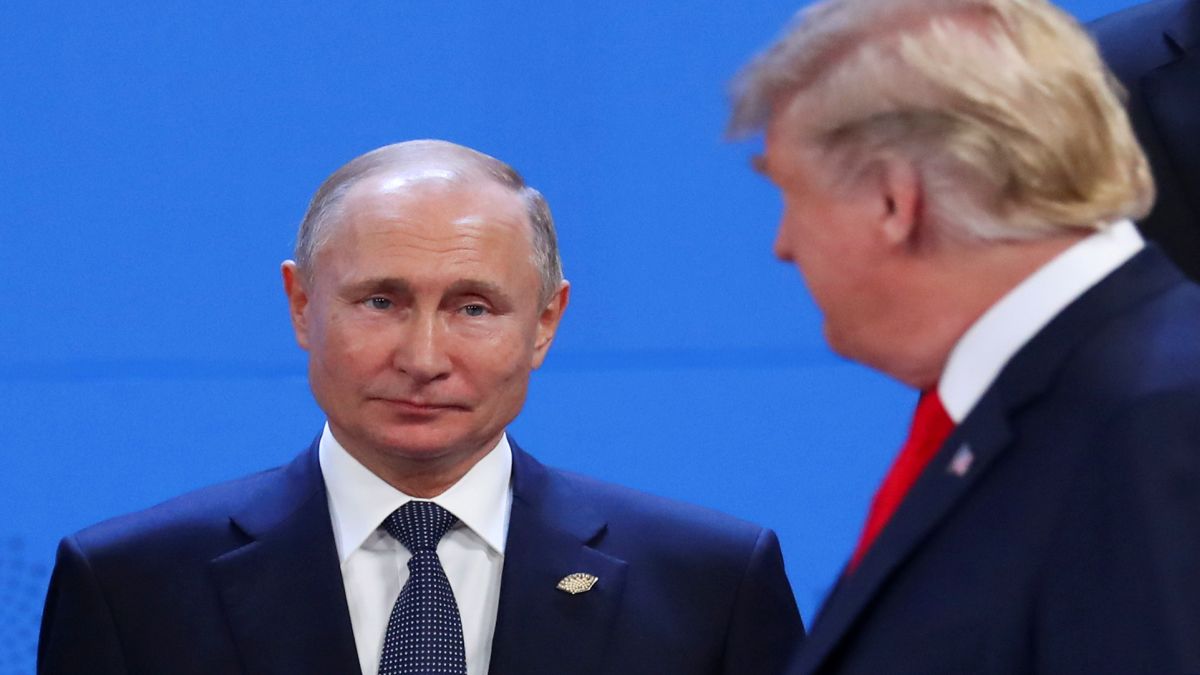) |
|
The prospect of a resolution to the protracted Russia-Ukraine conflict has emerged following a significant phone call between US President Donald Trump and his Russian counterpart, Vladimir Putin. The nearly 90-minute conversation, announced by Trump on February 12th, 2025, signaled a potential shift in the geopolitical landscape. Trump declared that the US and Russia would immediately commence negotiations to end the war, a statement met with a mix of hope and skepticism internationally. This development follows a period marked by escalating tensions and a seemingly intractable stalemate, characterized by US Secretary of State Marco Rubio's assessment of the conflict as “a protracted and bloody conflict” in need of immediate resolution. The immediate challenge lies in navigating the complexities of such negotiations. The significant length of time the war has already endured – over 1085 days – has resulted in devastating consequences for both nations, including significant economic setbacks and immense human cost. The sheer scale of loss of life underscores the urgency for a peaceful resolution.
Trump's announcement, disseminated through his social media platform, Truth Social, indicated that the discussion with Putin covered a wide range of topics, including Ukraine, the Middle East, energy, artificial intelligence, and the value of the dollar. He emphasized the agreement to collaborate closely, including reciprocal visits between the two countries. The Kremlin confirmed the call, with spokesperson Dmitry Peskov highlighting Putin's emphasis on addressing the conflict's root causes and achieving a lasting peace through negotiations. Peskov further underscored Putin's agreement with Trump's assessment that the time for collaboration between the two nations has arrived. This is a marked departure from the previous atmosphere of Western isolation imposed on Russia. The last meeting between a US president and Putin was the June 2021 Geneva summit with Joe Biden, highlighting the significance of this renewed dialogue.
The conversation between Trump and Putin was followed by a call with Ukrainian President Volodymyr Zelenskyy. Zelenskyy described the exchange as “meaningful,” sharing details of his discussion with Putin. Andriy Yermak, head of Zelenskyy's presidential office, confirmed the initiation of immediate work by high-level teams from both sides to develop a comprehensive agreement. These teams are poised to begin daily work, with a scheduled meeting between Zelenskyy’s officials and US officials at the Munich Security Conference beginning on February 14th. The timing of these calls is particularly interesting given that it occurred after US Defense Secretary Pete Hegseth's statement at a NATO meeting, where he indicated that Ukrainian NATO membership was not a realistic outcome of any negotiated settlement and that the return to pre-2014 borders was similarly unrealistic. This statement indicates a potential departure from the stance of previous administrations, notably that of Joe Biden, who maintained a more unwavering support for Ukraine's territorial integrity and aspirations for NATO membership.
However, the path towards a peaceful resolution remains fraught with challenges. Zelenskyy has expressed reluctance to negotiate terms that would involve ceding territory or compromising Ukrainian sovereignty. While he suggested a potential exchange of Russian-held Ukrainian territory for Russian territory in the Kursk region, this proposal was promptly dismissed by Russia as impossible. Russia’s insistence on the complete expulsion of Ukrainian forces from Russian-claimed territories presents a significant obstacle. Zelenskyy also emphasized the crucial role of the US in any future security arrangements, asserting that security guarantees lacking US participation are insufficient. These positions highlight the complexities and potential disagreements that will need to be overcome during the negotiations.
Furthermore, Trump's approach has already generated friction among his European allies. While there was initially no immediate reaction from the European Commission President, Ursula von der Leyen, the EU's chief diplomat, Kaja Kallas, stressed the importance of European involvement in any negotiations and reaffirmed the EU's commitment to Ukraine's independence and territorial integrity. Several other European nations voiced similar concerns, emphasizing that Ukraine should not be excluded from decisions about its future and that any peace agreement must be reached in conjunction with Ukraine and European partners. These differing viewpoints underscore the potential for significant disagreements among the negotiating parties, highlighting the difficult task ahead of Trump in orchestrating a mutually agreeable peace deal. The success of these negotiations will depend on the ability to reconcile deeply held positions and to find a path forward that respects Ukraine’s sovereignty while addressing Russia’s security concerns. The upcoming meetings will be crucial in determining the trajectory of this conflict and whether these efforts to achieve peace will prove successful.
The situation is dynamic and fraught with uncertainty. The divergence of views among key players, particularly between the US and its European allies, adds another layer of complexity. The success or failure of Trump’s efforts will significantly impact not only the future of Ukraine but also the broader geopolitical landscape. The international community watches with bated breath, hoping for a resolution that brings an end to the suffering and devastation caused by this protracted conflict. This outcome benefits all parties involved; and a peaceful resolution will undoubtedly benefit the world at large. Ultimately, the ability of President Trump to bridge these divides and achieve a lasting peace remains to be seen. The stakes are exceptionally high, and the path forward requires skillful diplomacy and a commitment to finding common ground among parties with deeply divergent interests.
